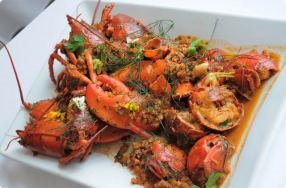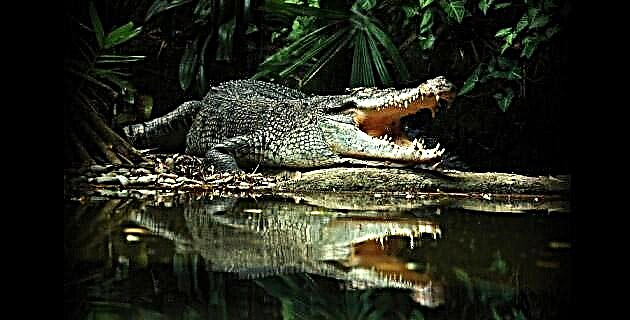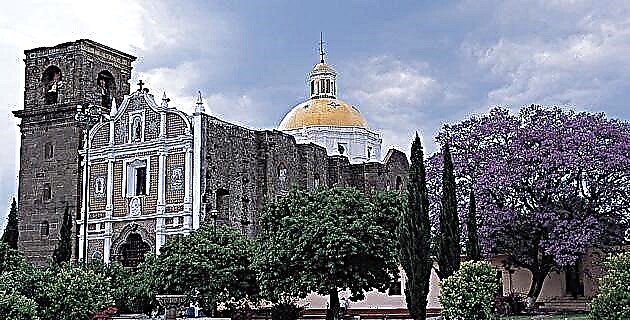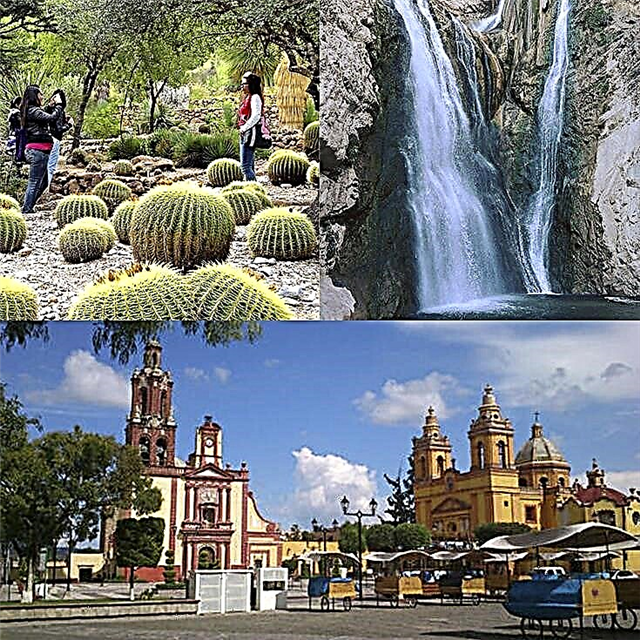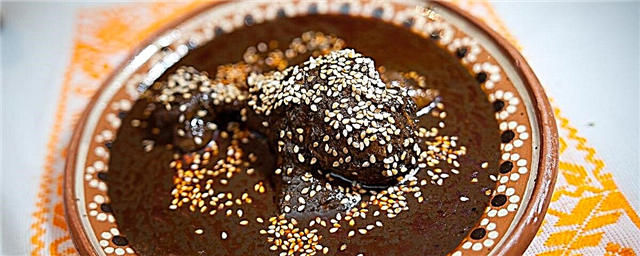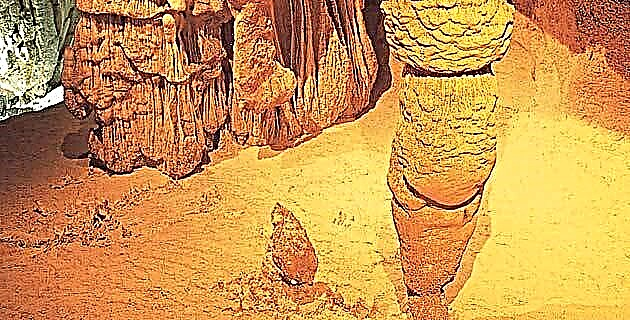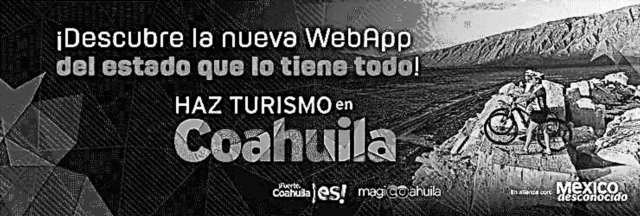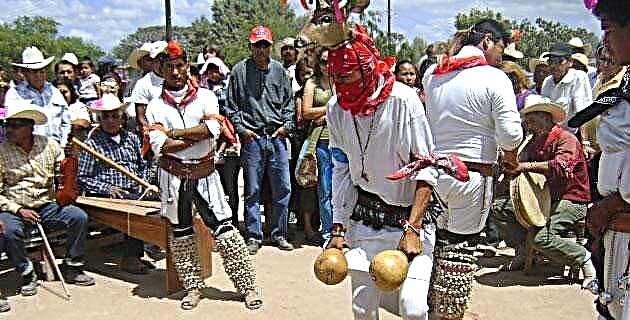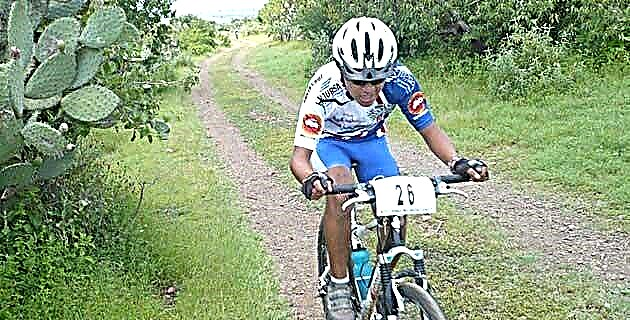
The bike offers us different sensations, communion with the environment becomes something unique and the terrain at times establishes a deep relationship with our wheels. For this reason, when defining the way in which I would visit the Magical Towns of Jalisco, I decided on the mountain bike.
It is not the same to see the earth from the air, than from the same surface or below it. We also believe that perspectives change depending on the mode of transport one uses and even the speed at which one travels. It is not the same sensation to run quickly down a narrow path, feeling the path flow under our feet, to walk it perceiving the most subtle detail of the landscape.
Color canvas
Visiting Tapalpa, a land of colors in Nahuatl, is effectively like diving into a painter's canvas. We arrived in the truck, from Guadalajara and after a "breakfast of champions" (personally I confess myself an admirer of Guadalajara bread) we were almost ready to get on the pedals. Helmet, gloves, glasses and other cycling gadgets, and some groceries. With the first impulse, the horizontal movement began, but also vertical, it is that the first meters we traveled were those of the cobbled streets of Tapalpa. Going through them became a meat tenderizer, viewed from a more positive perspective, a “relaxation” exercise, but nothing like meditation or yoga. However, you have to be realistic, and the truth is that as I write these words, the memory of said jiggling does not compare with the memory itself of pedaling through Tapalpa, and capturing the feast of color of its white houses with red tiles, its balconies and wooden doors. Faced with this postcard, the truth is that any type of physical discomfort is forgiven, or as they say around there, "whoever wants peach to hold the fluff".
Before leaving Tapalpa behind, it was worth making a brief visit to the center of town. On a sidewalk in the main street, some tables displayed regional sweets, the famous drunkards, for example; various derivatives of milk, such as pegoste; some fruits of the sierra in syrup, as well as the traditional rompope of the area. In the same way that the hen pursues pecking at the corn kernels, we continue along Matamoros Street, post after post until we come across the San Antonio temple, which stands at the end of a large esplanade. In front of this building is the old bell tower of the same 16th century church.
Tula Ironworks
Little by little, pedaling after pedaling, we enter the Guadalajara countryside, heading for the Hacienda de San Francisco. Endless stone fences accompanied us along and on both sides of the road. Vast meadows, like a green tapestry molded by the caresses of the wind, completely colored the landscape, dotted from time to time by an outcast group of wild flowers. The rains of the previous days grew the streams and crossing them was the guarantee that we would refresh our feet. The fresh breeze from the forest embraced us as the path was covered with lush pines, strawberry trees, oaks and oyameles. The road, whose destination was the town of Ferrería de Tula, having already mutated into a narrow path, crossed some rustic wooden doors that made us stop. At times, my mind crossed borders and the landscape took me back to those idyllic meadows of the Swiss Alps. But no, my body was still in Jalisco, and the idea that we have these wonderful places in Mexico filled me with joy.
Little by little, some houses began to appear on the side of the road, a sign that we were approaching civilization. Soon we are in the vicinity of Ferrería de Tula.
We gave a new turn to the map and now our route headed for a hard climb, we changed to the gentlest speed, we bowed our heads, we concentrated, we breathed deeply…. The minutes and curves passed, until we finally reached our mountain pass, exactly where the well-known “balanced stone” is; a flat rock that, resting on a more round one, plays at balancing.
Juanacatlán, Tapalpa and the stones
And finally the feast began, a path that winds its way down into the depths of a dense forest. We jump roots and dodge sharp stones that threaten to flatten our tires. Safe and sound we reached the town of Juanacatlán, just at the moment that my bike began to complain. We stopped at the first grocery store to arm ourselves with an emergency snack, and incidentally, the man from the store took us home, where a leftover motor oil from his truck was the momentary solution to my noisy chain.
With everything in order and spare parts, our route, after so many laps, returned to Tapalpa, but the path was not direct. In the distance, in a clear, rolling valley, I saw colossal blocks of rock scattered all over the place. The answer to my foreseeable question was simple, it was about what is known as the Valley of the Enigmas or “the stones”. There are several stories and legends that are intertwined around this special place. The most general one speaks of meteorites that fell at this point thousands of years ago; Those who suppose this, support their theory with the fact that the environment is devoid of vegetation and argue that no grass can grow here. But this is not very credible, since at first glance it seems that exhaustive grazing has been the main cause of desertification, including the obvious felling of trees. Another theory says that the rocks were underground until they were discovered due to water erosion. The most esoteric point of view is that these stone colossi have energetic and even mystical properties. The truth is that it is a place that has been occupied since prehistoric times and later by some pre-Hispanic tribes. Some locals assured us that there are petroglyphs here as evidence of the ancient inhabitants, but these reminiscences are not disclosed.
While pedaling I was savoring the famous Tapalpa chard tamales that had been talked about so much to me, when the unanimous decision was to leave them for later and continue pedaling. In short, after postponing the craving, we once again surround the town, because at the top you have an unparalleled view. Without doubting the word of my friend Chetto, a cyclist from Guadalajara who acts as a guide in my personal adventures in Jalisco, I began to climb the cobbled streets. They seemed endless, but after sweating several milliliters under the scorching afternoon sun, we saw the building where the Hotel del Country stands, and indeed from there, on the terrace of the restaurant, you have an unparalleled perspective of the valley and the mountains from Tapalpa, as well as from the El Nogal dam, our next destination. Returning to the dirt road, a gap that like a worm's back does not stop going up and down, took us around the 30 hectare dam. About 2 and a half kilometers before returning to the village, we passed through Atacco. In this neighboring community is the first foundation of Tapalpa and there are still the ruins of the first temple built in 1533. In the town, whose name means "place where the water is born", there is a spa, the only one in the region.
Thus our first chapter in this magical adventure comes to an end, of course, with chard tamales in between and a comforting pot coffee, watching from a balcony how the sun hid behind the red roofs.
Mazamitla
When I got here I stopped feeling so guilty about the whole thing about my imaginary postcard of the Alps. Well, in fact, Mazamitla is also known as the Mexican Switzerland, although for some others it is "the capital of the mountains." Nestled in the heart of the Sierra del Tigre, but only an hour and a half from the city of Guadalajara, it is an excellent place for those seeking adventure, but also a place to relax and enjoy the harmony of simple things.
In search of a place to have breakfast, we walked several times to the center of town. The architecture in general is similar to that of Tapalpa, with old houses with adobe and wood roofs, balconies and portals that give shade to the sidewalks and cobbled streets. However, the Parroquia de San Cristóbal, and its eclectic style, is far from what we had seen before.
As the sun peeked through the geometric roofs, the street began to lose its morning chill and some neighbors swept their portion of the street. Handicraft stalls were beginning to rise on the facades of the downtown stores. We peek around and find fruits, cheeses, jellies, hawthorn, blackberries, fresh dairy products such as butter, cream and panelas, and the typical mead atole. Finally I decided on a guava tea and we got ready for what we came, pedaling.
Epenche Grande and Manzanilla de la Paz
Leaving the town, we take the road to Tamazula. About 4 or 5 kilometers away, a gap starts on the right side, which was the way to go. Despite the fact that there are cars, it is difficult to meet one and to shoot it is almost ideal. This off-the-beaten-path dirt road is marked with signs indicating mileage, curves and even tourist information. A few kilometers away we cross the La Puente mountain pass, 2,036 meters high, and after a long descent, we arrive at the small community of Epenche Grande. But almost without stopping we continue a few more meters where, on the outskirts of the town, is the Epenche Grande Rural House, a refuge to rest and enjoy a good meal. A garden full of flowers and shrubs surrounds the large rustic-style house with an interior patio that invites you to relax and enjoy the sound of birds and the wind, under the shade of large pine trees and a fresh breeze. But in order not to get too cold or lose the thread of the story, we went back to the bikes. Rancherías and plantations dominate the landscape. From time to time, potato plantations line the plains and spread under the watchful eye of the high peaks of the Sierra del Tigre. It was noon and under the wheels, the shadow was nil, the sun was beating down and the air seemed not to blow. The road that at times acquired a whitish color, reflected the sun with force to the point that the frown became a constant. Thus we face the next mountain pass and cross the 2,263 meter high Pitahaya hill. Fortunately, everything that goes up has to come down, so the rest of the way became more enjoyable until Manzanilla de la Paz. After going through the first little store available and asking for the coldest thing they had, some cobbled streets and already invaded by weeds, they led us to the small dam of the town, where we took the opportunity to rest in the shade of some willows, since we still had a long way to go.
The next 6 kilometers were almost climbing, but it was worth it. We reached a panoramic point where the entire Sierra del Tigre stretched out under our shoes. The route through the towns of Jalisco now has another meaning, because seeing the immensity of these lands from this perspective acquires a magic of its own.
Our gap was left behind, supplanted by a fun path that for several kilometers led us to dive deep into a pine and oak forest sheltering from some rays of light. Under the golden hue that the atmosphere acquires in the evening light, we returned to the road in the direction of Mazamitla, in search of a good dinner.
During the silent rolling on the asphalt, I reviewed the different landscapes, the ups and downs, trying to record and without losing detail, the 70 kilometers that we had pedaled exploring the roads of Jalisco.
Source: Unknown Mexico No. 373 / March 2008

